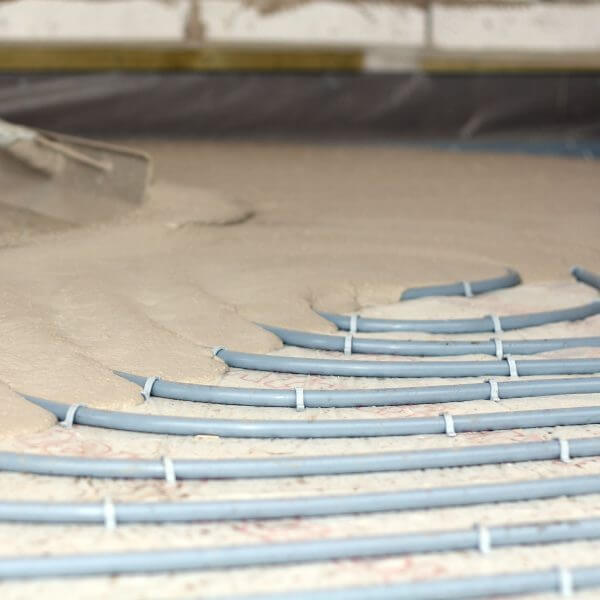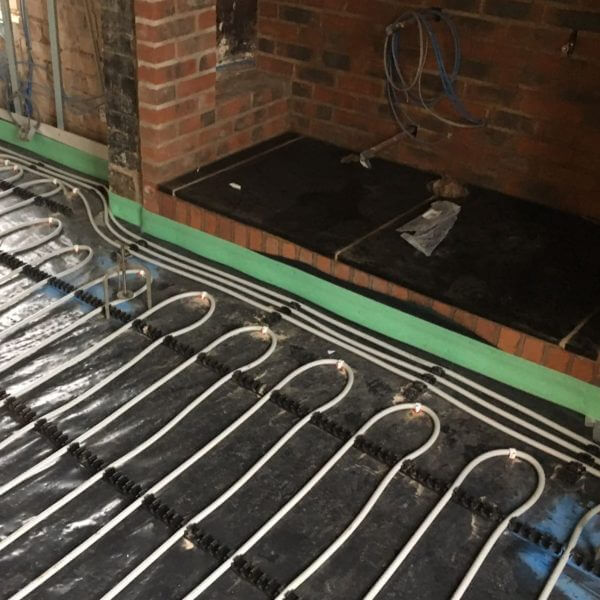How Much Money Does Underfloor Heating Actually Save?
You will often hear that efficient underfloor heating can save from 15% to as high as 40% on utility bills. If a boiler used £2.13 of gas* in a day on heating, that means savings from 31p to 85p. A monthly usage bill of £66 using radiator based heating could therefore be reduced to between £56.42 and £39.68 per month.
For many business owners looking to save money when operational costs are so high, this can be a significant option to pursue. But is it actually true? How much money does underfloor heating actually save? And are there any hidden costs associated with it?
*Assuming 7.11p per kWh for gas, based on the current price cap since July 2023. Daily standing charges have not been included in this calculation.
How Efficient Underfloor Heating Saves Money
The reason we say underfloor heating can save from 15% to 40% is because there is a large variety of factors at play. From the age of the building to its airflow, insulation level, and current heating setup. Some months may be colder than others, making annual savings calculations difficult. Despite this, there are several facts that assure underfloor heating saves money.
The first fact is that a hydronic heating system laid in a floor operates at a lower boiler flow temperature than traditional central heating. Boilers have to be heated to 70°c to supply radiators efficiently, but operate effectively at 40°c for underfloor systems without sacrificing efficiency.
When a boiler’s flow temperature is lowered by 20°c, it typically uses 12% less gas. Where a boiler heated to 70°c for an hour would use 20kWh* of gas, the same boiler heating to 40°c for an hour may use 16.4kWh of gas or less.
* Based on a 20KW boiler.
The next fact is that – as part of Easyflow’s standard design and installation – underfloor heating is damp proofed and floor insulation is laid down. This reduces heat loss through floors, and eliminates draughts originating from floors.
The majority of accessible performance data calculates the efficiency of floor insulation in regard to residential properties. Despite this, there are potential savings from £60 to £155* annually on heating bills.
*Estimates based on current domestic gas prices as of July 2023.
Combining these facts with how underfloor heating works more efficiently compared to radiators, you can see how an efficient underfloor heating setup can save money.
Is Electric Underfloor Heating Cost Savings the Same?
In most cases, even the best electric underfloor heating has less efficiency savings than wet underfloor heating. As we explored in our most cost effective underfloor heating blog, electric underfloor heating:
- Costs more to run per hour due to the price of electricity per kWh typically being higher than gas
- Needs to be active for longer periods of time than wet underfloor heating
- Cannot integrate with energy-efficient heat pumps
Despite this, the electric underfloor heating cost to run, and the cost of installation is generally cheaper than a radiator-based heating system.
Are There Hidden Costs Associated With Underfloor Heating
Most detractors of underfloor heating will bring up the installation costs as a reason why it may not save money. It is true that floor heating has a significant installation cost, and it can take years for this to be offset by the savings. The electric underfloor heating cost to install is significantly lower than the water-based variant, but it does not have the same savings on operational costs.
But remember, there are grant schemes available that can offset the cost of installing new eco-friendly efficient underfloor heating much faster. Furthermore, if your radiator system is ageing and in need of replacement, underfloor heating is only 20-40% more costly. Radiators lose efficiency over 12 years, whilst a well-built floor heating system can last 50 years and beyond.
There are also maintenance costs to consider. Radiators often require power flushing when there is a build-up of pipe corrosion and sediment. Wet underfloor heating does not use metal pipes in a typical circuit, therefore there is a much lower need to flush the system. The best electric underfloor heating installation should require no maintenance at all across its lifespan.




Where To Find Us